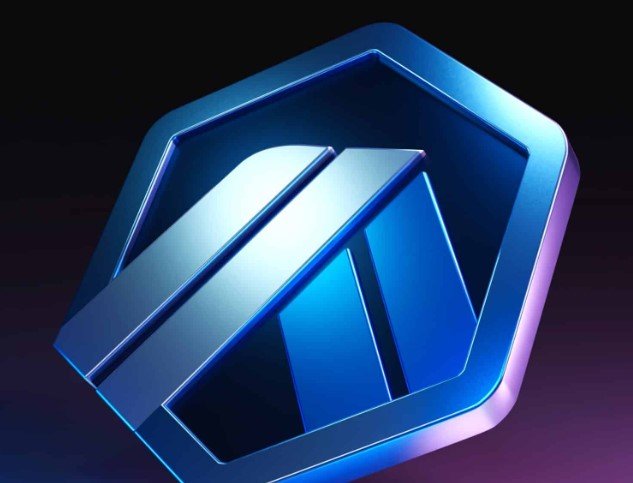The Ethereum community has rallied to defend co-founder Vitalik Buterin’s vision for Layer 2 (L2) solutions amidst rising criticism. Detractors have claimed that L2s are misaligned with Ethereum’s core principles and diverge from the intended roadmap. In response, key figures within the community, including Offchain Labs co-founder Steven Goldfeder, have addressed these misconceptions by revisiting Buterin’s 2020 rollup-centric roadmap. This defense underscores the importance of L2 solutions in Ethereum’s scalability and future growth.
Misalignment or Misunderstanding?
The debate around Layer 2 solutions and their role within Ethereum has been heating up, fueled by concerns that these scaling solutions are deviating from the broader vision laid out for Ethereum. Critics argue that L2s, such as Arbitrum and Base, operate as distinct entities and compete with each other, suggesting fragmentation rather than unity. However, Goldfeder refuted this by highlighting Buterin’s own words from the 2020 roadmap, where he described Ethereum as a collection of “islands” that are unique yet interlinked. This metaphor supports the notion that it is not only acceptable but beneficial for Ethereum to consist of multiple L2s, each contributing to the network’s overall robustness and scalability in different ways.
Goldfeder’s next focus was on the criticism that L2 tokens and revenue models, such as fee and MEV (Maximal Extractable Value) collection, contradict Ethereum’s values. He pointed to Buterin’s explicit inclusion of these elements in the 2020 roadmap, illustrating that these features were not afterthoughts but planned components of Ethereum’s evolving ecosystem. This clarification aims to dispel the notion that L2s are inherently misaligned with Ethereum’s principles.
The community’s defense of L2 solutions highlights the importance of understanding the nuanced vision behind Ethereum’s development. By revisiting the original roadmap, supporters aim to clarify misconceptions and reinforce the strategic role of L2s in achieving Ethereum’s long-term goals.
The Role of Layer 2 Solutions
Layer 2 solutions are designed to address Ethereum’s scalability issues by processing transactions off the main Ethereum chain (Layer 1) while still leveraging its security. This approach significantly increases transaction throughput and reduces fees, making Ethereum more accessible and efficient. The rollup-centric roadmap proposed by Buterin in 2020 emphasized the importance of L2s in scaling Ethereum without compromising its decentralization and security.
One of the primary benefits of L2 solutions is their ability to handle a large volume of transactions, which is crucial for the widespread adoption of decentralized applications (dApps) and decentralized finance (DeFi) projects. By offloading transactions from the main chain, L2s help alleviate congestion and lower gas fees, making Ethereum more user-friendly and cost-effective.
Moreover, L2 solutions enable faster transaction finality, which is essential for applications that require quick and reliable transaction processing. This capability is particularly important for DeFi platforms, where timely execution of trades and other financial operations is critical. The integration of L2s into Ethereum’s ecosystem is a strategic move to enhance its scalability and support its growing user base.
The community’s defense of L2 solutions underscores their vital role in Ethereum’s future. By addressing misconceptions and highlighting the benefits of L2s, supporters aim to foster a better understanding of their importance in the broader Ethereum ecosystem.
Addressing Criticisms and Moving Forward
Despite the clear benefits of Layer 2 solutions, criticisms persist. Some detractors argue that L2s create fragmentation within the Ethereum ecosystem, as different L2s may have varying levels of compatibility and interoperability. However, proponents counter that this diversity is a strength, as it allows for experimentation and innovation within the Ethereum framework. By having multiple L2s, the ecosystem can explore different approaches to scalability and identify the most effective solutions.
Another criticism is that the introduction of L2 tokens and the collection of fees and MEV revenue could lead to centralization and misalignment with Ethereum’s core values. However, supporters argue that these mechanisms are necessary to incentivize the development and maintenance of L2 solutions. By providing economic incentives, L2s can attract developers and resources, ensuring their continued growth and improvement.
Looking ahead, the Ethereum community remains committed to addressing these criticisms and refining the implementation of L2 solutions. By fostering open dialogue and collaboration, the community aims to ensure that L2s align with Ethereum’s principles and contribute to its long-term success. The ongoing defense of Vitalik’s vision for L2s highlights the community’s dedication to achieving a scalable, secure, and decentralized Ethereum network.


 Bitcoin
Bitcoin  Ethereum
Ethereum  Solana
Solana  Cardano
Cardano  Chainlink
Chainlink  Sui
Sui  Avalanche
Avalanche  Polkadot
Polkadot  Mantle
Mantle  Bittensor
Bittensor  NEAR Protocol
NEAR Protocol  Internet Computer
Internet Computer  Aptos
Aptos  Arbitrum
Arbitrum  Algorand
Algorand  Cosmos Hub
Cosmos Hub  Filecoin
Filecoin  Render
Render  Sei
Sei  Jupiter
Jupiter  Stacks
Stacks  Optimism
Optimism  Injective
Injective  Celestia
Celestia  The Graph
The Graph  Pyth Network
Pyth Network  Immutable
Immutable  THORChain
THORChain  MultiversX
MultiversX  dYdX
dYdX  Flow
Flow  Akash Network
Akash Network  Illuvium
Illuvium  Metis
Metis  Manta Network
Manta Network  Dymension
Dymension  Kujira
Kujira